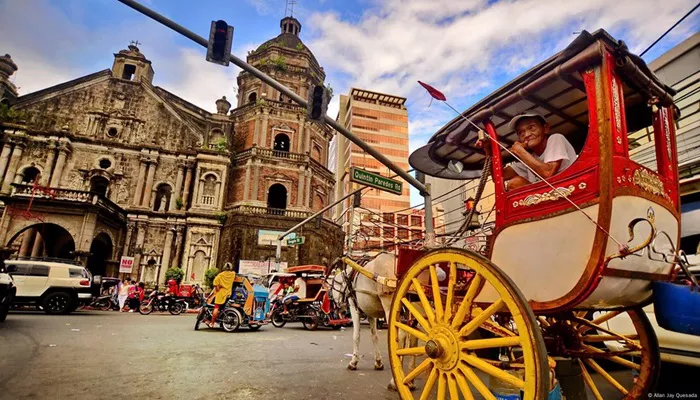When it comes to country names, most are derived from geographical features, historical events, or great leaders. However, one country in the world stands out for being named after a royal family: the Philippines. The nation’s name is directly linked to King Philip II of Spain, a monarch from the powerful Habsburg family, whose reign marked the beginning of Spanish colonization in the region.
This article explores the fascinating story of how the Philippines came to bear the name of a family, the historical context behind the naming, and the lasting influence of that family in the country’s identity.
The Philippines: A Country Named After King Philip II
The Philippines is an archipelago in Southeast Asia, made up of over 7,000 islands. Throughout its history, the country has experienced various periods of colonization, notably by Spain, which ruled the islands for more than 300 years. The name “Philippines” is a direct tribute to King Philip II of Spain, under whose reign the islands were first discovered and colonized by Europeans.
The name itself was first used officially in the 16th century, when Spanish explorer Ruy López de Villalobos named the islands “Las Islas Filipinas” in honor of the king. Over time, this name became associated with the entire archipelago.
King Philip II: The Monarch Behind the Name
King Philip II was born in 1527 and ruled Spain from 1556 to 1598. He was a member of the Habsburg family, one of the most powerful royal families in Europe at the time. Philip II’s reign was characterized by significant military and territorial expansion, and Spain became a dominant global power under his leadership. During his reign, Spanish explorers embarked on journeys to various parts of the world, including the Philippines.
Although King Philip II never set foot in the Philippines, his authority over the Spanish Empire, which included vast territories in the Americas, Europe, and Asia, played a central role in the country’s colonial history. The islands, previously known by different names by indigenous peoples, came to be known as “Las Islas Filipinas” after the Spanish colonists.
The Spanish Influence and Colonial Legacy
Spain’s rule over the Philippines lasted for over 300 years, from 1565 until 1898. During this time, the Spanish colonizers introduced their language, religion, and culture to the islands. Spanish became the dominant language, and Catholicism was firmly established as the country’s main religion.
The name “Philippines” not only represents the country’s colonial past but also the influence of Spain’s royal family on its development. Other places within the archipelago were also named in honor of Spain’s royalty, but the country as a whole took its name from King Philip II.
The Habsburg Family and Its Global Influence
The Habsburg family was one of the most influential dynasties in Europe. At the height of its power, the family ruled vast areas of the continent, including Spain, Austria, and the Holy Roman Empire. King Philip II’s reign marked a period of immense territorial expansion and consolidation of power for the Habsburgs.
Philip’s connection to the Philippines, however, is one of the most lasting legacies of the Habsburg family’s influence on the world. The royal family’s name became synonymous with Spanish imperialism, and their power was reflected in the way that many regions around the world were shaped by their governance.
Meaning Behind the Name “Philippines”
The name “Philippines” is a straightforward yet symbolic tribute to King Philip II. The suffix “-ines” in “Filipinas” indicates that the islands are “of Philip,” meaning they belong to the king. This naming convention was a common practice during the colonial era, where newly discovered lands were often named after monarchs or rulers.
While the name was initially a symbol of Spain’s colonial presence, it later became an important part of the Philippines’ national identity. The islands, although under foreign rule for centuries, retained the name given to them by their Spanish colonizers, which is now a central part of their historical narrative.
From Colonial Rule to Independence
Despite the Philippines gaining independence from Spain in 1898 after the Spanish-American War, the name “Philippines” remained unchanged. In the years following independence, the country gradually shifted from being a Spanish colony to being part of the American Empire and finally achieving full sovereignty in 1946.
Though the colonial era ended, the name “Philippines” continued to serve as a historical marker of the nation’s ties to the Spanish monarchy. The name, once a symbol of colonization, evolved to represent the resilience of the Filipino people, who had endured centuries of foreign rule and fought for independence.
Conclusion
The Philippines remains the only country in the world named after a royal family. The name “Philippines” honors King Philip II of Spain, whose reign marked the beginning of Spanish colonization in the region. While the country’s name initially symbolized Spain’s imperial presence, it has evolved into a symbol of Filipino pride, resilience, and independence.
The historical connection between the Philippines and the Habsburg family highlights the far-reaching impact of European royal dynasties on global affairs. Today, the Philippines stands as a sovereign nation with its own identity, but the name “Philippines” will always remain a tribute to the family that left an indelible mark on its history.

